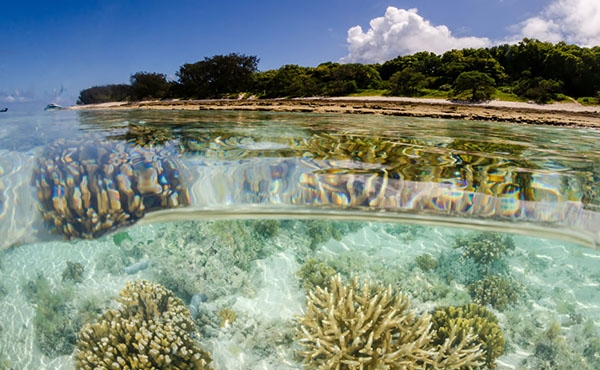Coastal ecosystems include those from the top of the Catchment (defined by the Great Dividing Range) to the marine inshore ecosystems within the Region, including island ecosystems. They are not restricted to waterways or the coastline. The coastal ecosystems referred to in this section are predominantly terrestrial and include: saltmarshes, freshwater wetlands, forested floodplains, heath and shrublands, grass and sedgelands, woodlands and forests, and rainforests.
The condition of the Reef benefits from connections with healthy and functioning coastal ecosystems in the Catchment. Coastal ecosystems support critical processes such as the distribution and cycling of sediments, nutrients and water, and facilitate connectivity, including by providing feeding, breeding and nesting habitat for many marine species. Intact coastal ecosystems can help mitigate coastal erosion and decrease sediment and nutrient loads entering the Region. These coastal habitats are managed, monitored and reported on under a values-based management framework by Queensland Parks and Wildlife Service.
The Region’s coastal ecosystems hold deep material and cultural significance for First Nations peoples, who have served as traditional custodians of these places for millennia.36 Nearly all wetland plant and animal species are reported to have some form of traditional use,36 which varies through Country and Sea Country with the seasons.933 The Wet Tropics rainforests exemplify the richness of this enduring connection: the Wet Tropics World Heritage Area is the current home of at least 20 First Nations groups encompassing around 120 clans and 8 languages.934 Living evidence from floodplain forests, in the form of ‘scar trees’,36 and archaeological evidence, such as stone arrangements and other cultural artefacts found within saltmarshes,935 underscore the longstanding cultural importance of these habitats.
The data on current vegetation extent are compared to the data on vegetation extent before European settlement (Table 3.1). The coastal ecosystems have been grouped based on broad vegetation group classifications.936 Broad vegetation groups are higher level groupings of vegetation communities and regional ecosystems that provide an overview of major ecological patterns and relationships across Queensland.



